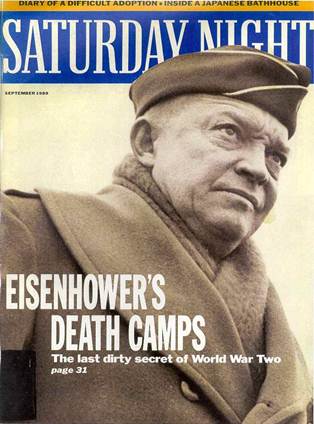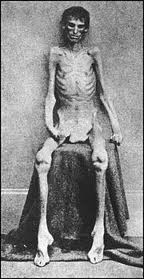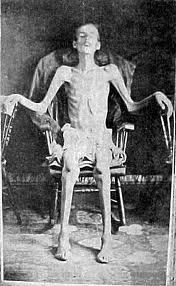
Civil War POW Camps
Mike Wright wrote, “On both
sides of the war, men and women were locked away in dark prisons or held in
outdoor camps under blistering sun and freezing snow. They were fed too little
and lived and died under primitive conditions.”
[1] There were approximately 193,743
Northerners and 214,865 Southerners held during the war. Over twelve percent of
the prisoners died in Northern prisons while over fifteen percent died in the
South. This is attributed to the superior hospitals, physicians, medicines, and
foods available in the North. Consequently, there should have a notable
difference in favor of the Union.
[2] Roughly, 56,000 prisoners died during
their captivity – 30,000 Union soldiers and 26,000 Confederates due to the
failures of the incarcerators to maintain proper shelter, or provide adequate
food and medical attention. Both sides of the conflict concealed the horrific
conditions that existed in the camps. Author Reid Mitchell asserts that the
topic of Civil War prisons is the “least studied subjects relating to the Civil
War.”
[3] Perhaps it is because it set an egregious
precedent for the treatment of “enemies” in subsequent U.S. wars.
The Confederates were
barely able to procure food for their military and thus it was not a high
priority. The North had a better distribution and administrative system. Prison
guards, in both the North and the South, were frequently poorly disciplined Home
Guards who were unqualified for other more responsible positions. Captives were
confronted with questionable personnel and arrived at conclusions about their
captors based on the example of those patrolling the prison fences.
[4] This may be the case in any prison
environment, deliberate or incidental.
Andersonville
Though we typically only
hear about the horrors of Camp Sumter, also known as Andersonville, both the
North and the South had prison camps. Together there were more than 150 POW
camps. Some of them may have been old forts, buildings or warehouses. Some camps
provided tents; others provided no shelter. The camps were more deadly than the
war. The skeletal survivors of the camps resembled survivors of the camps, both
National Socialist and Eisenhower’s camps following World War II.
[5]

After winning the Battle of
Chattanooga, some of the federal troops wanted to continue to


Camp Morton, a Precedent
Northerners are quick to
point the moral finger of slavery and Andersonville which often silences any
reasonable dialogue. Yankees compare Andersonville with the National Socialist
camps. Any media presentation of POW camps during this fateful war focuses on
Andersonville at the exclusion of the North’s hellish Camp Morton. The Union
tried, convicted, and executed Henry Wirz, the commander of Andersonville, for
alleged crimes that occurred before he took charge of the camp or while he was
away from the camp due to illness. The Union called 160 witnesses to testify
against him. Of those witnesses, 145 testified that they had no knowledge of
Wirz killing or mistreating anyone. Only one witness could provide the name of a
victim Wirz supposedly killed. The Union did not allow key defense witnesses to
testify while the prosecution handpicked witnesses to solidify their case
against Wirz. The Union gave its most convincing witness a written commendation
and a first-rate government job. Secretary of War Edwin Stanton reported that a
higher percentage of Southern POWs died while incarcerated than Northern POWs.
[9] The Union hung Wirz on
The Union appointed Colonel
Ambrose A. Stevens as the new commandant of Camp Morton on October 22, 1863.
John A. Wyeth, a Confederate prisoner of the Union, arrived at Camp Morton, near
Indianapolis, Indiana in late October 1863. He survived the camp and went on to
become a physician. Years later, he exposed the horrific conditions at the camp
in the April 1891 issue of Century Monthly Magazine. Other victims of the
camp then came forward and corroborated Wyeth’s disclosures. According to Wyeth,
the Union had erected the camp on about twenty acres of ground that they
formerly used as a fairground. They enclosed the camp by a twenty-foot high
plank wall. There was a rivulet running through the middle of the camp with
sheds on both sides. They initially assembled the sheds to house cattle.
[11]
They built the walls of wooden planks which had shrunk and separated. There were
four tiers of bunks on each side of the “barracks” which extended seven feet out
towards the center. They housed 320 men in each shed. The lowest tier was one
foot off the ground; the second was three feet above the first and so on. The
Union allowed prisoners about two feet each with their heads next to the wide
cracks of the wall with their feet towards the building’s center. The snowy
winter weather in 1863-64 decreased to twenty below zero. Each man had one
blanket. During a storm, snow would usually cover this meager blanket by
morning. The men suffered tremendously as they were unaccustomed to cold weather
which lasted until April.
[12]
Prisoners, walking skeletons, regularly died of starvation on a daily ration
that was not enough for a single meal. The prisoners augmented the meat rations
by harvesting the camp’s rat population. Gangrene resulting in death from
untreated frostbite was an issue. In the crowded squalid sheds, vermin and
parasites were an aggravating challenge. Close personal contact, inadequate
scanty clothes, and no bathing or sanitary facilities contributed to the failing
health and starving conditions of the prisoners, many of which were under
eighteen years of age. The guards physically abused the prisoners who also
suffered constant mental abuse. The sadistic guards immediately shot many of
them or bludgeoned them to death for minor infractions. The guards, possibly for
sport or retribution, repeatedly shot through the flimsy-walled sheds during the
night. Wyeth left this hellhole in February 1865. Two thousand young Confederate
soldiers died at Camp Morton.
[13]
Some of the sheds did not
have bunks, so the prisoners had to sleep on the damp, cold ground in the sheds.
Prisoners, dirty, cold, lousy and emaciated, slept in their clothes to “keep
from freezing.” A Sergeant Pfeifer would walk through the sheds with a heavy
stick thrashing left and right into the heads of the starving prisoners yelling
– “this is the way you whip your Negroes.” Pfeifer was just one of many brutes
who delighted in abusing the POWs.
[14] There is sufficient data to document the
cruelties of camp life at the hands of the Union, during the War for Southern
Independence combined with the ethnic cleansing of America’s indigenous
population. Those simultaneous wars served as a perverse prototype for future
camps and untold millions of victims, all concealed by government policy and
obedient officials.
The Department Encampment
of the Grand Army of the Republic refuted Wyeth’s claims. The department said it
could not imagine why Wyeth and others would fabricate such stories. Century
Monthly Magazine then allowed Wyeth another opportunity to expose Camp
Morton’s horrors. His first exposure brought a flood of articles and letters
published in newspapers nationwide. There were claims that the government paid
contractors to supply adequate food but the prisoners never received it due to
internal theft. Like the Indians, the Confederates were also at the mercy of
corrupt politicians and their crooked cronies.
[15]
[1] What They Didn't Teach You about
the Civil War by Mike Wright, Presidio Press,
[2] Civil War Prisons edited by
William B. Hesseltine, Kent State University Press, Kent, Ohio, 1972,
Heseltine’s original work was published in 1930. p. 6
[3] On the Road to Total War, The
American Civil War and the German Wars of Unification, 1861-1871 edited
by Stig Förster and Jörg Nagler, German Historical Institute,
Washington, D.C. and Cambridge University Press, New York, 1997, pp.
565-566
[4] Civil War Prisons edited by
William B. Hesseltine, Kent State University Press, Kent, Ohio, 1972,
Heseltine’s original work was published in 1930. p. 7
[5] What They Didn't Teach You about
the Civil War by Mike Wright, Presidio Press,
[6] Ibid, p. 153-170
[7] Civil War Prisons edited by
William B. Hesseltine, Kent State University Press, Kent, Ohio, 1972,
Heseltine’s original work was published in 1930. p. 6
[8] What They Didn't Teach You about
the Civil War by Mike Wright, Presidio Press,
[9] The South Was Right by James
Ronald Kennedy and Walter Donald Kennedy, Pelican Publishing Company,
Gretna, Louisiana, 1991, pp. 45-47
[10] What They Didn't Teach You about
the Civil War by Mike Wright, Presidio Press,
[11] Den of Misery, Indiana’s Civil
War Prison by James R. Hall, Pelican Publishing, Gretna, Louisiana,
2006, pp. 57-59
[12] Ibid, pp. 57-59
[13] Ibid, pp. 60-63
[14] Ibid, pp. 79-83
[15] Ibid, pp. 74-77